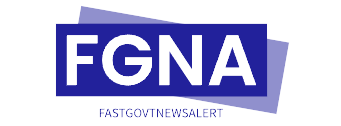
The Bank of Canada (BoC) is considering a significant shift in how it presents its economic forecasts. Instead of providing a single, definitive projection, the central bank may offer a range of outcomes to account for the uncertainty caused by U.S. tariffs and other global economic factors. This potential change was highlighted by BoC Governor Tiff Macklem during a recent press conference, where he emphasized the challenges of predicting economic trends in an unpredictable environment.
The BoC is set to release its quarterly monetary policy report on April 16, which typically includes growth predictions for the Canadian economy. However, Macklem noted that the volatility in U.S. trade policy has made it difficult to rely on a single forecast. This shift reflects the BoC’s commitment to transparency and adaptability in uncertain times.
Bank of Canada: Bold New Projections
| Key Insight | Details |
|---|---|
| Range of Projections | BoC may provide a range of economic outcomes instead of a single forecast. |
| Reason for Change | Uncertainty due to U.S. tariffs and global economic volatility. |
| Current Growth Forecast | 1.8% growth in 2025; 2% annualized growth in Q1 2024. |
| Monetary Policy Focus | Minimizing risks and anchoring inflation expectations. |
| Historical Context | Last major change in forecasting was during the COVID-19 pandemic. |
The Bank of Canada is navigating uncharted waters as it considers shifting from single forecasts to a range of economic projections. This change reflects the central bank’s commitment to transparency, flexibility, and risk management in an unpredictable global economy. By providing a range of outcomes, the BoC can better prepare for multiple scenarios and maintain its focus on low inflation and economic stability.
Why Is the Bank of Canada Considering This Change?
The Bank of Canada has always been a pillar of stability, providing clear guidance to businesses, policymakers, and the public. However, the current economic landscape is fraught with uncertainty, particularly due to U.S. tariffs and their potential impact on trade.
Governor Macklem explained that the flip-flopping in U.S. trade policy makes it challenging to predict how tariffs will affect the Canadian economy. For example, tariffs on Canadian exports like steel and aluminum could reduce demand, while tariffs on imported goods might increase consumer prices. This unpredictability forces the BoC to adopt a more flexible approach.
The Challenge of Forward-Looking Policies
Traditionally, central banks rely on forward-looking policies to guide economic decisions. These policies are based on assumptions about future economic conditions. However, when those assumptions are unreliable—as they are now—the BoC risks making decisions that could either be ineffective or exacerbate economic problems.
Macklem emphasized that the BoC must minimize risks by being less forward-looking until the situation becomes clearer. This means focusing on current data and being prepared to act quickly when new information emerges.
How Will a Range of Projections Help?
Providing a range of economic outcomes instead of a single forecast offers several advantages:
- Transparency: Acknowledging uncertainty builds trust with the public and stakeholders.
- Flexibility: A range allows the BoC to adapt its policies as new data becomes available.
- Risk Management: It reduces the likelihood of making decisions based on incorrect assumptions.
For example, if the BoC predicts a growth range of 1.5% to 2.5% for 2025, it can prepare for multiple scenarios. This approach is particularly useful in volatile times, as it ensures the central bank is not caught off guard by unexpected developments.
Read Also: Canada’s Happiness Ranking Plummets
The Impact on Inflation
One of the BoC’s primary mandates is to maintain low and stable inflation. However, tariffs can complicate this goal. Macklem noted that it’s unclear how much of the tariff costs will be passed on to consumers and how much will reduce demand.
If tariffs lead to higher consumer prices, the BoC may need to focus on anchoring inflation expectations. This means ensuring that businesses and consumers do not expect prices to rise indefinitely, which could lead to a vicious cycle of inflation.
Understanding the BoC’s Approach
- Identify the Source of Uncertainty: In this case, it’s U.S. tariffs and their unpredictable impact.
- Assess the Risks: Determine how tariffs could affect trade, demand, and consumer prices.
- Develop a Range of Scenarios: Create multiple economic forecasts based on different assumptions.
- Communicate Clearly: Explain the rationale behind the range of projections to maintain public trust.
- Stay Flexible: Be prepared to adjust policies as new data emerges.
Bank of Canada: Your Financial Future FAQs
1. Why is the Bank of Canada considering a range of projections?
The BoC is facing significant uncertainty due to U.S. tariffs and global economic volatility. A range of projections allows the central bank to account for multiple scenarios and minimize risks.
2. How will this change affect businesses and consumers?
Businesses and consumers can expect more transparent communication from the BoC. However, they should also prepare for potential economic fluctuations due to ongoing uncertainty.
3. What is the BoC’s current growth forecast?
The BoC predicts 1.8% growth in 2025 and 2% annualized growth in the first quarter of 2024.
4. How does this relate to inflation?
Tariffs could lead to higher consumer prices, forcing the BoC to focus on anchoring inflation expectations to prevent runaway inflation.
5. When will the BoC return to single forecasts?
The BoC will likely return to single forecasts once the uncertainty surrounding U.S. tariffs and global trade policies diminishes.
